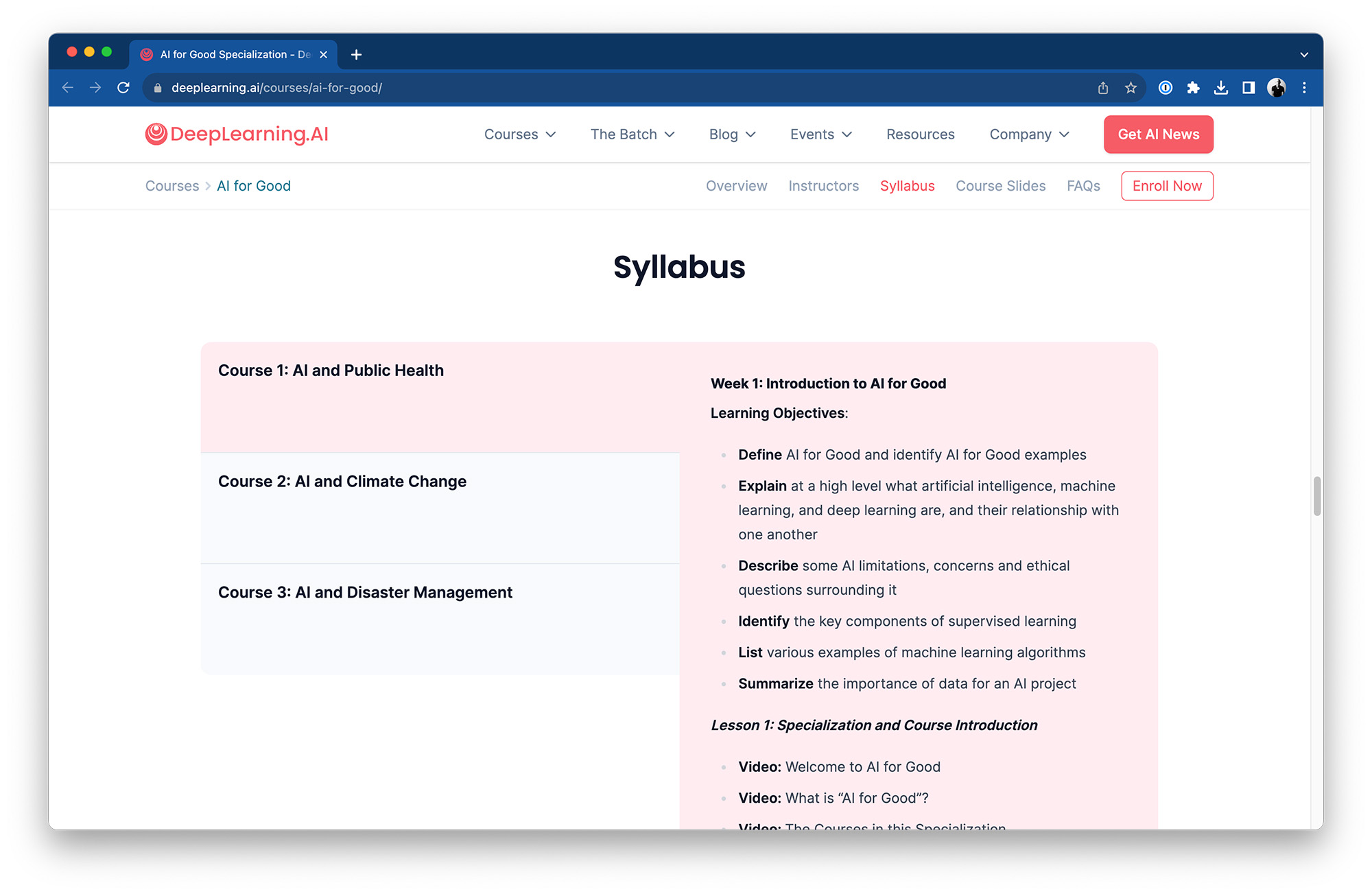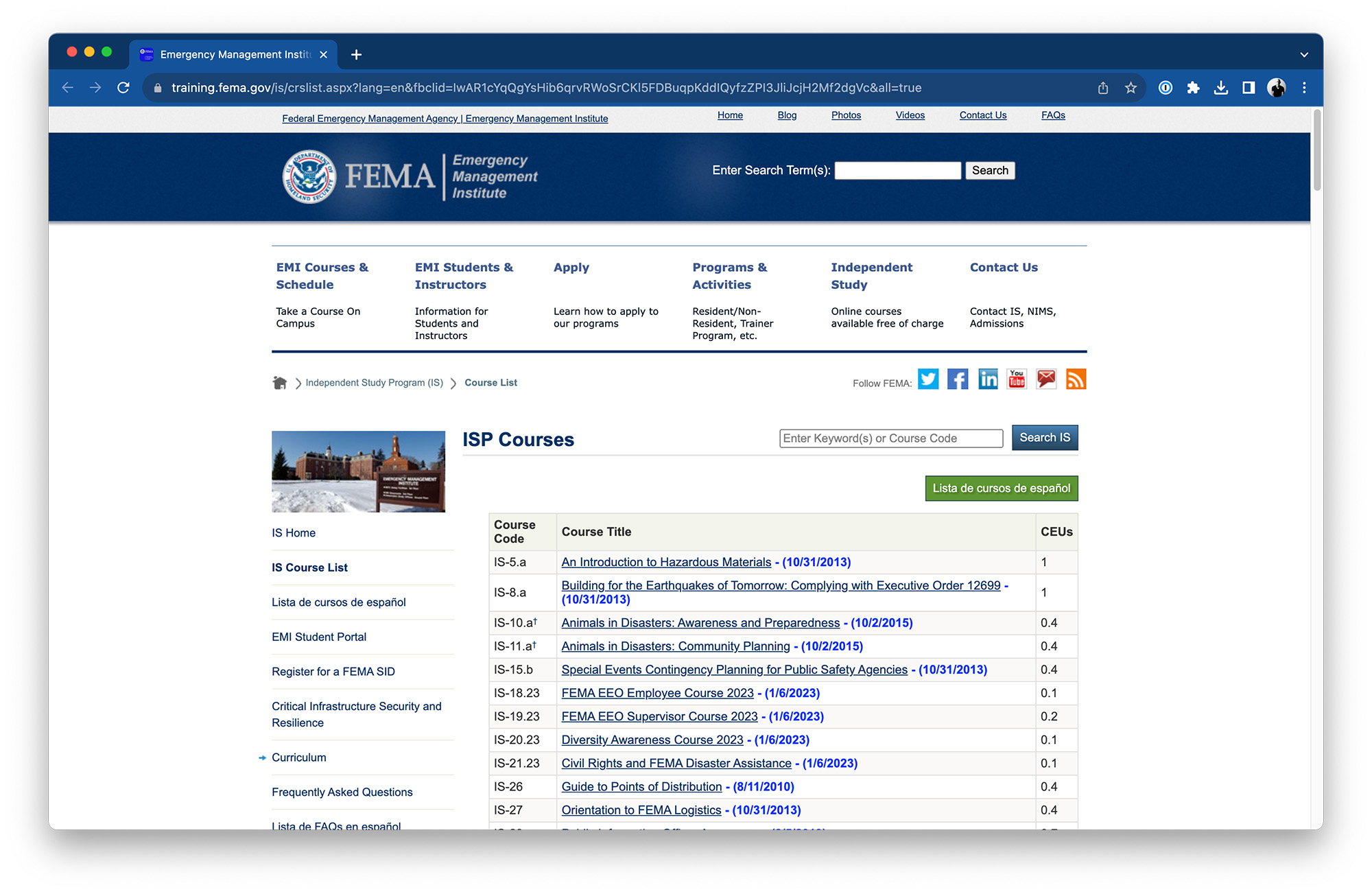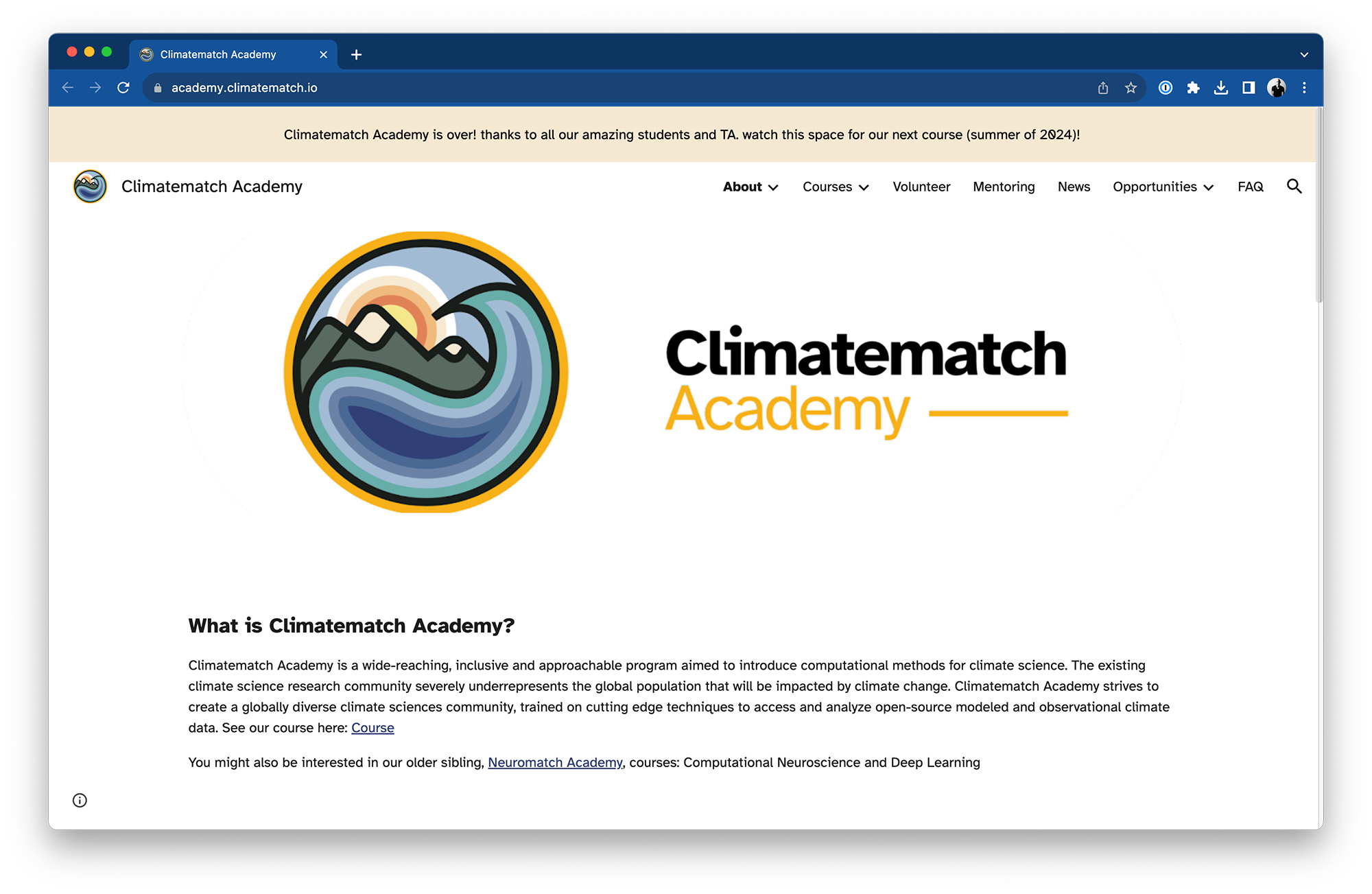Today, I’m compiling a list of books and courses that I either personally found, or were recommended to be my trusted friends and colleagues, to better understand the fields of Emergency Management and Disaster Management in context of natural disasters.
My goal is to spend 30-60 minutes per day going through these resources, and within a few months, develop a high-level understanding of these fields.
From there, I can leverage my experience in computer science and artificial intelligence to better help the community serving those affected by natural disasters.
I genuinely feel that I’m on the right track with this project.
Last week I posted on my personal Facebook profile, sharing what I was working on with NaturalDisasters.ai. Two of my friends, whom I haven’t spoken to in many years, sent me messages sharing their own expertise in Emergency and Disaster Management.
One of those friends is actually the Deputy Directory of Emergency Management in the State of Maryland, where I was born and raised!
Small world.
And while some people may think of this as a mere coincidence, I tend to think of it as the universe leaving me breadcrumbs, softly inviting me to follow the path, and keep an open mind to where it’s going.
Table of Contents
I’m thinking of starting a self-study program
 I’m considering starting a self-study program to learn Emergency and Disaster Management (image credit)
I’m considering starting a self-study program to learn Emergency and Disaster Management (image credit)
If there is enough interest, I’ll put together a self-study group (likely a Slack or Discord channel, or equivalent, with weekly group calls), and we can all learn about Disaster and Emergency Management together.
One Important Note — this is not a course, and I won’t be teaching you.
Think of this more as a collaborative learning circle. We’ll be pooling our knowledge, sharing insights, and navigating through the materials side by side.
This is a true study group, where every member, including me, is a student eager to learn and grow.
If you’re interested in joining a self-study program with me, sign up for the self-study email list here.
Coursera courses on AI for Public Health, Climate Change, and Disaster Management

I want to give a huge shoutout to NaturalDisasters.ai reader, Khalid Bouziane, for suggesting Coursera’s AI for Good Specialization, which includes three separate courses related to public health, climate change, and disaster management:
The final course on AI and Disaster Management is most relevant to this blog, and likely where I’ll spend the most time, but given that natural disasters are intimately intertwined with both climate change (which directly impacts the frequency and volatility of natural disasters), and public health (a subset of which includes the response to natural disasters), I plan on spending time in all three.
Coursera claims that it takes only 30 days at 5 hours/week to work through at a beginner level, so if you have any prior experience in AI and data science, I imagine you’ll be able to make quick work of the specialization.
FEMA’s courses on Emergency Management

I feel tremendously lucky to have such good friends — Callie Gorgol and Eric Krichinsky, after seeing my Facebook post announcing NaturalDisasters.ai, reached out to me and recommended FEMA’s Emergency Management Institute.
The Federal Emergency Management Agency (FEMA) exists within the United States Department of Homeland Security (DHS), created under President Jimmy Carter in 1978.
“The agency’s primary purpose is to coordinate the response to a disaster that has occurred in the United States and that overwhelms the resources of local and state authorities. The governor of the state in which the disaster occurs must declare a state of emergency and formally request from the President that FEMA and the federal government respond to the disaster.”
I had found FEMA’s courses during my initial research into Emergency Management, but had dismissed them due to:
- Being overwhelmed by the number of courses
- Not knowing where to start
- Genuinely questioning whether or not they would be worth the time investment
Callie set me straight:
“There are hundreds of them [FEMA courses], some are better than others. They will give you a good idea on the system/structure that most EMs will work within during active response and recovery.”
She recommended that I go through the following introduction courses:
- S-100.C: Introduction to the Incident Command System, ICS 100 (2 hours)
- IS-700.B: An Introduction to the National Incident Management System (3.5 hours)
- IS-200.C: Basic Incident Command System for Initial Response, ICS-200 (4 hours)
- IS-800.D: National Response Framework, An Introduction (3 hours)
- IS-230.E: Fundamentals of Emergency Management (6 hours)
- IS-235.C: Emergency Planning (5 hours)
- IS-120.C: An Introduction to Exercises (3 hours)
- IS-909: Community Preparedness: Implementing Simple Activities for Everyone (1 hour)
- IS-2000: National Preparedness Goal and System Overview (2 hours)
- IS-2200: Basic Emergency Operations Center Functions (4 hours)
- IS-2900.A: National Disaster Recovery Framework (NDRF) Overview (3 hours)
These courses are far longer than the Coursera AI for Good Specialization, and are therefore much more of a time and attention commitment — apparently, they are quite “dry” to go through, but they are also very targeted to the Emergency and Disaster Management, which makes me believe they are worth the time.
Most of these courses didn’t exist prior to 9-11, and even after 9-11, much of the field focused on Homeland Security (in relation to terrorist attacks).
According to Callie, it wasn’t until Hurricane Katrina reminded the world that natural disasters also fit into the same emergency response framework.
The fields of Emergency Management and Disaster Management are still very much in their infancy, which just goes to show there is still much work to be done.
Climatematch Academy

In response to my LinkedIn post asking my followers for help bringing attention to NaturalDisasters.ai, long-time friend and fellow AI author, Amita Kapoor, recommended Climatematch Academy.
Climatematch Academy, part of the larger Neuromatch nonprofit, is an educational program aimed at helping data scientists understand computational methods applied for climate science problems.
The course is online based, and is highly intensive, taking two weeks to work through. The last time the course ran was July 2023; however, according to their website they are planning on offering a 2024 version of the course.
I emailed the course directors to see if I could get access to it in the meantime, and I received the following response within 24 hours from Ohad Zivan (thanks Ohad!):
“Dear Adrian,
you can access everything here:
https://comptools.climatematch.io/tutorials/intro.html
The course is opensource and available for the public.”
I particularly like this course because it’s clearly designed for computer scientistis with backgrounds in data science, machine learning, and artificial intelligence.
My initial plan is to start with the Coursera AI for Good Specialization, and then do a mix of both FEMA courses and Climatematch Academy.
I fear that if I do exclusively FEMA courses that my brain will slowly turn into mush (and then I wouldn’t be much good to anyone).
Textbooks
 Emergency and Disaster Management Textbooks (image credit)
Emergency and Disaster Management Textbooks (image credit)
I try to stay away from textbooks when I’m first starting to explore a new field. Textbooks are, by definition, quite dense, and it can be hard to quickly grok the overall structure of the field, including what’s important, what’s extraneous (at least for beginners), etc.
That said, my exploration has led me across two textbooks that I think could be worth going through:
- The Disaster Recovery Handbook: A Step-by-Step Plan to Ensure Business Continuity and Protect Vital Operations, Facilities, and Assets
- Introduction to Emergency Management (6th Edition)
I may or may not go through these textbooks — it really depends on the level of depth I get from the FEMA courses, and if I feel that it’s worth further diving into the text.
Regardless, I wanted to include them here as a matter of completeness.
Advice from my friend in the Emergency and Disaster Management field
 Emergency and Disaster Management worker (image credit)
Emergency and Disaster Management worker (image credit)
Seriously, I can’t thank Callie Gorgol, Deputy Director of Emergency Management, enough. She’s been an invaluable resource in my initial foray into Emergency and Disaster Management.
Not only has she provided some incredible resources to learn form, but she’s also provided practical advice that you just won’t find in textbooks:
“The caveat to all the courses, books, etc. is, as I mentioned briefly before, it’s important to remember that when you’re reading Emergency Management (EM) books and taking courses, it’s often very textbook-oriented.
However, once you delve into the real world of EM, it’s not quite what you might expect.
One significant issue I have noticed between academic EM and real-world EM is that the academic focus tends to revolve around the Incident Management System (ICS) and active response scenarios.
This, in reality, makes up only a small fraction of what I deal with as a local EM professional (and what most deal with).
In my role, it’s more about project and program management, stakeholder engagement, legislative development, and a whole array of other tasks.
I can go from conducting operational senior policy group meetings to troubleshooting issues on our CCU/RTUs and then jump into holding a tabletop exercise with Merriweather, for example. It’s a diverse and dynamic field.”
There is no way I would have known this without her expert input.
Callie goes on to share:
“It’s also worth noting that each jurisdiction operates differently. While the fundamental concepts such as ICS and the principles of EM are universal, the day-to-day tasks and challenges can vary significantly.
If you’re looking for an area to make an impact, I suggest talking to people in the EM field to understand what they do, the issues they face, and where there might be gaps to fill. There’s a tremendous opportunity to develop something that can have a profound impact.”
In short, talk to people in the field.
(Which is just generally good advice for any field, not just Emergency and Disaster Management).
Thank you Callie, you’ve been so helpful. I owe you one.
Takeaways
Today, I shared some invaluable resources I’ve gathered to deepen my understanding of Emergency Management and Disaster Management, especially in the context of natural disasters.
By merging these fields with my expertise in AI and computer science, I aim to make a significant impact on communities affected by these events.
Here are the key takeaways from the post:
- The Power of Sharing: By sharing my journey and project, NaturalDisasters.ai, on my personal Facebook profile, I reconnected with friends, even one who serves as the Deputy Directory of Emergency Management in Maryland.
- Coursera’s AI for Good Specialization: Recommended by a reader, this specialization has three courses, each focused on a unique intersection, including AI and Public Health, AI and Climate Change, and AI and Disaster Management. While the AI and Disaster Management course is most pertinent, understanding the role of climate change in the frequency and volatility of natural disasters, as well as the public health response, is equally vital.
- FEMA’s Courses on Emergency Management: Recommended by friends who spotted my NaturalDisasters.ai Facebook announcement, FEMA’s Emergency Management Institute offers comprehensive courses, several of which I’ve listed. These courses are intense and tailored to Emergency and Disaster Management, covering the frameworks and systems employed during disaster responses in the U.S. Post 9-11, the emphasis on Homeland Security overshadowed natural disasters, but Hurricane Katrina re-emphasized the importance of preparing for nature-induced calamities.
- Climatematch Academy: As a response to a LinkedIn post, I was introduced to Climatematch Academy, part of the Neuromatch nonprofit. This program aids data scientists in grasping computational techniques for climate science issues. The course is rigorous, spanning two weeks, but it’s free, open-source, and available to the public.
- Textbook Approach: I usually steer clear of textbooks when venturing into a new field (due to their dense nature and time commitment to read through), I stumbled upon two which seem promising for those wanting to delve deeper.
I want to reiterate that the books and courses listed here are just a starting point for me. By no means is this a complete, comprehensive list.
As I venture further into the integration of AI with disaster and emergency management, I invite you to journey with me.
If you’re interested in a shared self-study program to learn these topics, join my self-study email list here.
Finally, a huge thank you to everyone who has recommended courses, provided insights, and shared their expertise — you’re a huge help and I am indebted to you.
Citation information
Adrian Rosebrock. “Essential Courses and Books for AI, Disaster Management, and Emergency Management”, NaturalDisasters.ai, 2023, https://naturaldisasters.ai/posts/essential-courses-books-ai-disaster-emergency-management/.
@incollection{ARosebrock_DisasterEmergencyManagementCourses,
author = {Adrian Rosebrock},
title = {Essential Courses and Books for AI, Disaster Management, and Emergency Management},
booktitle = {NaturalDisasters.ai},
year = {2023},
url = {https://naturaldisasters.ai/posts/essential-courses-books-ai-disaster-emergency-management/},
}
AI generated content disclaimer: I’ve used a sprinkling of AI magic in this blog post, namely in the “Takeaways” section, where I used AI to create a concise summary of this article. Don’t fret, my human eyeballs have read and edited every word of the AI generated content, so rest assured, what you’re reading is as accurate as I possibly can make it. If there are any discrepancies or inaccuracies in the post, it’s my fault, not that of our machine assistants.
Header photo by Priscilla Du Preez on Unsplash
